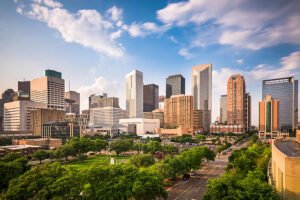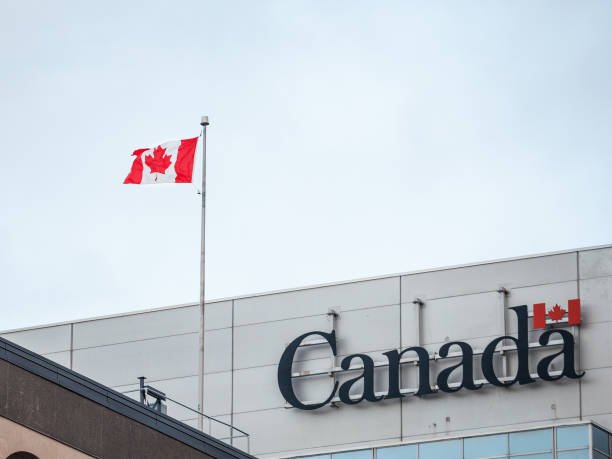As of 2025, the U.S. job market has continued to evolve following the post-pandemic recovery and the rise of remote work, automation, and shifting industry demands. While overall employment rates have shown improvement nationwide, not all cities offer the same level of opportunity. All Job seekers, both local and foreign ones are advised to consider more than just the number of open positions; other factors such as industry diversity, cost of living, and economic stability should also be taken into consideration too.
Advertisement
The choice of location can have a significant impact on a job seeker’s success. In cities where economic growth is sustained and specific industries are thriving, job opportunities tend to be more abundant and better-paying. Conversely, in cities facing economic stagnation or high unemployment, the job search can be more competitive and less rewarding.
The Cities I included in this guide have been ranked based on a combination of key factor indicators:
- Current Unemployment rates as reported by the U.S. Bureau of Labor Statistics.
- Year-over-year job growth data statistics.
- Industry diversity and expansion.
- Cost of living and housing affordability.
- Long-term economic projections (5-7years)
In the sections below, six of the best and six of the most challenging cities for job seekers in the United States will be reviewed, based on the most recent labor market data and economic reports.
Advertisement
Top 6 Best Cities for Finding Jobs in the USA
The following cities have been recognized for offering favorable conditions for job seekers, including robust job creation, competitive wages, and supportive economic ecosystems.
1. Austin, Texas
Austin has consistently been named one of the top-performing cities in terms of job growth and economic development. Its reputation as a major tech hub has been reinforced by the relocation and expansion of companies such as Tesla, Oracle, and Google.
Employment opportunities have been widely available across the information technology, healthcare, and education sectors. A relatively low unemployment rate has been maintained, and the local economy has been supported by a steady influx of both talent and investment. Additionally, a lower cost of living compared to other tech-heavy cities such as San Francisco or Seattle has made Austin an attractive option for professionals and entrepreneurs alike.

2. Nashville, Tennessee
Nashville’s job market has been defined by rapid expansion, particularly in healthcare and hospitality. Major healthcare companies, including HCA Healthcare and Vanderbilt University Medical Center, have established strong operations in the area, resulting in consistent hiring demand.
A more affordable cost of living than other major metropolitan areas has helped job seekers retain more of their income. The city’s economic recovery following the pandemic has been noted for its resilience, with new jobs being created across a variety of sectors including tourism, music, education, and logistics. Unemployment has remained below the national average.
3. Raleigh, North Carolina
Raleigh, as part of the Research Triangle region, has become a magnet for biotechnology, pharmaceuticals, and research-driven industries. Major employers in the area have included companies such as IBM, GlaxoSmithKline, and Cisco Systems.
A highly educated workforce has been supplied by nearby institutions such as Duke University, the University of North Carolina at Chapel Hill, and North Carolina State University. This has encouraged companies to invest in innovation and development within the city. The unemployment rate has remained low, and the quality of life has been considered high due to access to green spaces, a reasonable cost of living, and low crime rates.
4. Salt Lake City, Utah
Salt Lake City has been increasingly recognized as a center for economic stability and job creation. Industries such as financial services, technology, and healthcare have been responsible for a large portion of the region’s employment.
Companies such as Goldman Sachs and Adobe have established a significant presence, contributing to a strong labor market. The employment rate in Salt Lake City has remained consistently high, and the area has been known for its business-friendly policies and infrastructure investment.
Compared to other metropolitan regions, housing in Salt Lake City has remained more affordable, allowing workers to achieve a higher standard of living. The availability of outdoor activities and a safe environment has also contributed to the city’s appeal for young professionals and families.
5. Tampa, Florida
Tampa has been increasingly viewed as a favorable city for job seekers due to its growing economic sectors and attractive tax policies. Significant growth has been experienced in tourism, healthcare, and logistics industries that have driven much of the region’s post-pandemic recovery.
Major employers such as BayCare Health System and Publix Super Markets have provided stable employment across the Tampa Bay area. The absence of a state income tax in Florida has allowed workers to retain more of their earnings, making the region financially appealing for both new graduates and mid-career professionals.
In addition to these, Tampa’s population has continued to rise, creating expanded demand for services and infrastructure. This trend has contributed to increased hiring across multiple sectors, including retail, construction, and transportation.
6. Denver, Colorado
Denver has maintained a strong and diverse labor market, supported by its active technology, aerospace, and renewable energy industries. Employment opportunities have consistently been available in both technical and professional fields, with companies such as Lockheed Martin, Ball Aerospace, and Arrow Electronics operating in the region.
The city’s educated population and highly skilled workforce have made it an attractive site for corporate investment. As a result, demand for professionals in engineering, IT, and finance has remained high.
Additionally, Denver’s quality of life has attracted talent from across the country. Its outdoor lifestyle, cultural amenities, and transportation infrastructure have encouraged companies to relocate or expand their operations in the area, further strengthening the job market.

That’s all on the 6 best cities for job seekers finding jobs in the USA. Now, let’s dive in to the 6 Worst Cities. It’s not advisable for job seekers to seek jobs in to the following cities.
Top 6 Worst Cities for Finding Jobs in the USA
The following cities have been identified as challenging environments for job seekers, based on economic instability, high unemployment rates, and limited industry diversity.
1. Detroit, Michigan
Although efforts have been made to revitalize Detroit’s economy, recovery from its long-standing industrial decline remains ongoing. Manufacturing jobs, once the backbone of the city’s economy, have been significantly reduced.
Unemployment in the region has remained higher than the national average, and job diversity has continued to be limited. While investments in technology and small business development have been introduced, their impact has not yet been broadly felt.
Population loss has further weakened the city’s economic base, affecting tax revenue, public services, and consumer demand—factors that are crucial to sustainable job creation.
2. Bakersfield, California
Bakersfield’s economy has been heavily reliant on oil production and agriculture, industries that have become increasingly volatile and seasonal. Job growth outside of these sectors has been minimal, and opportunities for career advancement have remained limited.
The median household income has stayed below the national average, and workers have faced higher levels of underemployment. While the cost of living in Bakersfield is lower than in other parts of California, it has not been enough to offset the scarcity of high-quality jobs.
Economic diversification has been slow, leaving job seekers with few alternatives during downturns in the local oil or farming industries.
3. Newark, New Jersey
Job seekers in Newark have faced substantial challenges due to a combination of high competition, economic inequality, and elevated living costs. While the city’s proximity to New York City offers some advantages, it has also created disparities between local wages and expenses.
Employment growth has been uneven, with a heavy concentration in low-wage service jobs. High crime rates and aging infrastructure have further discouraged private investment and long-term job creation.
In many cases, the cost of living in Newark has not been matched by sufficient wage growth, making it one of the least favorable urban areas for job seekers without specialized skills or credentials.
4. Shreveport, Louisiana
Shreveport has experienced a shrinking labor force, with more people leaving the area than entering it for work. The city’s economy has struggled to recover from losses in the oil, gas, and manufacturing sectors.
Job creation has been significantly below the national average, and few new industries have been developed to replace the ones that have declined. Infrastructure and workforce investment have also lagged behind comparable cities.
As a result, long-term employment prospects have remained weak, particularly for young professionals and recent graduates. Many have chosen to relocate to larger cities in search of more promising opportunities.
5. Cleveland, Ohio
Cleveland has faced long-standing challenges associated with the decline of its once-thriving manufacturing sector. While some efforts have been made to transition toward healthcare, education, and service industries, the pace of economic rebound has remained slower than in comparable midwestern cities.
Job growth has been limited, particularly for younger and more highly educated workers. As a result, a phenomenon commonly referred to as “brain drain” has been observed, with many recent graduates leaving the region in search of more promising career opportunities elsewhere.
Persistent economic disparities, aging infrastructure, and high vacancy rates have further complicated recovery efforts. Although affordable housing is available, it has not been sufficient to compensate for the lack of upward mobility and professional development prospects.
6. Fresno, California
Fresno has remained heavily dependent on its agricultural economy, with limited industrial or technological diversification. As a result, seasonal employment patterns and low-wage work have dominated the local labor market.
The unemployment rate in Fresno has consistently been higher than the national average. Underemployment and job insecurity have affected a significant portion of the working population, particularly among younger and low-income residents.
Poverty levels have remained elevated, and many residents have faced barriers to education, healthcare access, and stable employment. Although the cost of living in Fresno is lower than in California’s coastal cities, the lack of high-quality job opportunities has made it a challenging environment for career advancement.

Conclusion
The U.S. job market in 2025 has presented both opportunities and obstacles, depending heavily on location. While cities such as Austin, Raleigh, and Salt Lake City have demonstrated strong job growth and economic diversity, others such as Detroit, Cleveland, and Fresno have continued to face economic hurdles that limit employment prospects.
For job seekers, the choice of where to live and work should be guided by more than just the number of openings. Affordability, long-term industry outlook, and lifestyle considerations should also be carefully evaluated. Factors such as cost of living, local demand for specific skill sets, and access to career development resources can significantly influence one’s success in the job market.
Before making a relocation decision, it is recommended that job seekers research regional economies, consult labor statistics, and explore current industry trends relevant to their professional background. By choosing a city that aligns with their career goals and financial needs, individuals can position themselves for both stability and growth in an increasingly dynamic job landscape.


















I’m ready to work and ready for marriage
I’m interested to work provided am given the opportunity
Hi how are you doing today? I need a UK Marriage visa.
l want to work in Canada as an fruit pinking job and married there working and stay with you my dear love that is all I want thanks
Am very very much interested…love you too ❤️
I will like to travel abroad for marriage
I what to travel
I commented that I will never miss beaf , And I wish everyone that long life and prosperity and happiness my name is Bakare Muyideen Alausa and I am from Africa Lagos state Nigeria,
I am a mechanical engineering,
+2347049417032 you can chat me up on WhatsApp
Promise
I will like to travel
i need sponsorship Visa travel and pay back later i will be very greatfull if my application is favorable consider Thanks God Almighty bless you ijn thanks 🙏
my wattspp number +2347011326828
thanks 🙏
Canada
I believe in been there and am interested oOoOO
I have finished nursing in medical hospital in Nigeria here with good certificate, good performances, good name,honest, truthful and faithful with my master, mates and my friends now I want to come to abroad for learning doctor for more good experiences and for work receiving high payment of salary money and also for marriage and I finally promised that I will marry a female who is seriously ready now to really help me and bring me come to abroad from Nigeria and am single ready to come to abroad now this year
I want to travel to Canada for work and marriage by
Please I need to be there please for visa sponsorship there are many ladies over there that promised to be sponsorship so please I need their contact